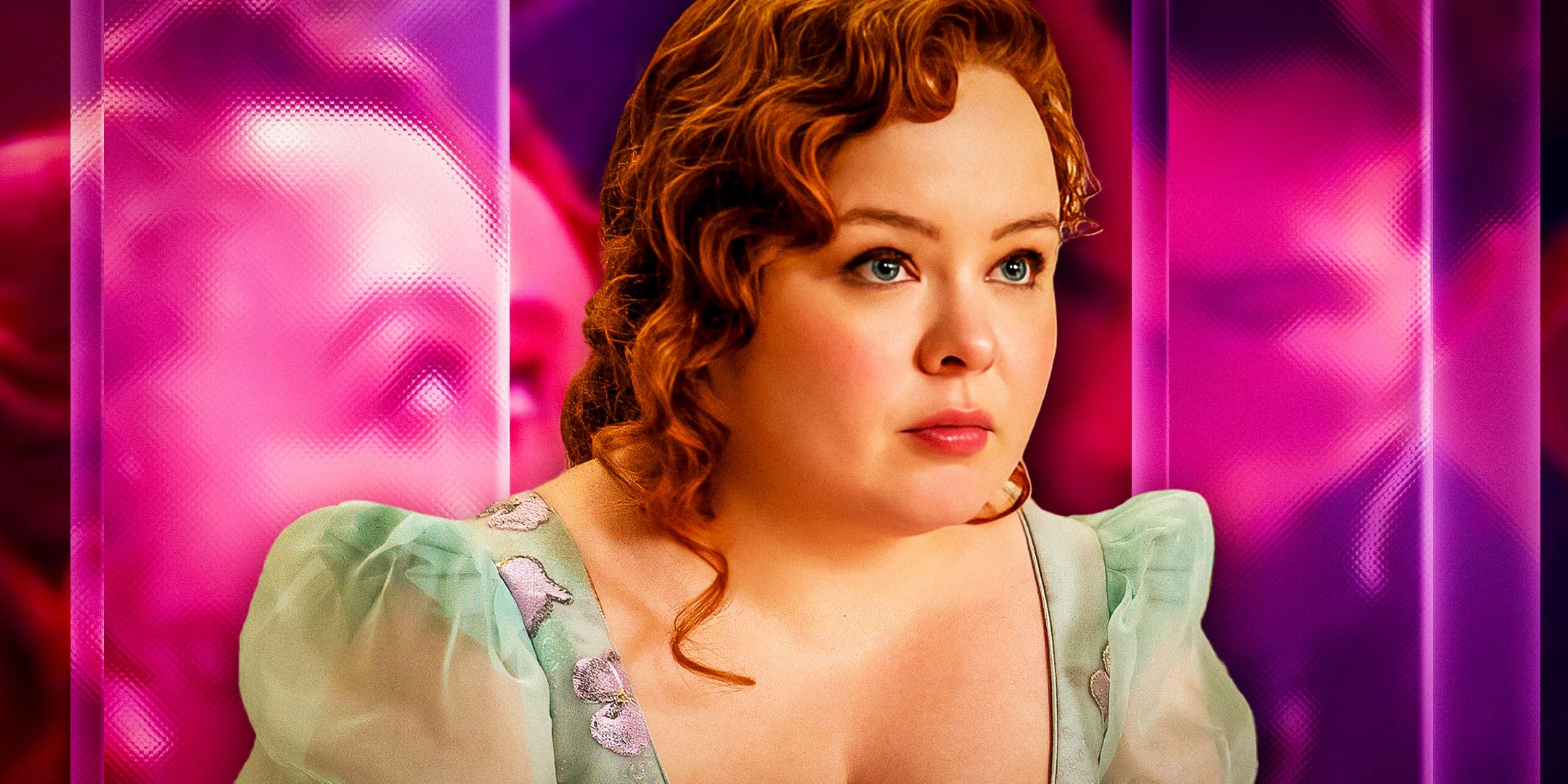The substance mirror scene monster has intrigued audiences for years, capturing the imagination of viewers and critics alike. This enigmatic creature often appears in films and literature, representing a complex interplay of fear, identity, and self-reflection. As we delve into the origins and symbolism of the substance mirror scene monster, we uncover layers of meaning that resonate deeply with human psychology and cultural narratives.
While the concept of the mirror has long been associated with self-examination and truth, the introduction of a monstrous element adds a layer of horror and fascination. The substance mirror scene monster embodies the duality of human nature, reflecting both our deepest fears and hidden desires. As a symbolic entity, it challenges characters and audiences to confront their own inner demons and question their perceptions of reality.
In this comprehensive article, we will explore the various interpretations and manifestations of the substance mirror scene monster across different media. By examining its origins, cultural significance, and impact on storytelling, we aim to shed light on why this creature continues to captivate and terrify us. Join us as we navigate the dark and reflective world of the substance mirror scene monster.
Read also:Optimized Tesla Tire Pressure Guide For Enhanced Performance And Safety
Table of Contents
- Biography and Origins
- Cultural Significance
- Symbolism and Themes
- Literary and Cinematic Appearances
- Psychological Implications
- Iconic Examples
- Impact on Pop Culture
- Theoretical Interpretations
- Artistic Representations
- Contemporary Adaptations
- Audience Reception
- Frequently Asked Questions
- Conclusion
Biography and Origins
The substance mirror scene monster does not have a singular biography, as it is a conceptual entity rather than a character with a defined backstory. However, its origins can be traced back to ancient myths and folklore, where mirrors often held mystical significance. In many cultures, mirrors were believed to be portals to other worlds or tools for divination, making them ideal settings for encounters with the supernatural.
Throughout history, the idea of a monster emerging from a reflection has been a recurring theme. This can be seen in stories like Narcissus from Greek mythology, who fell in love with his own reflection, ultimately leading to his doom. The mirror becomes a symbol of self-obsession and the dangers of vanity, laying the groundwork for the emergence of the substance mirror scene monster in modern narratives.
Table: Key Attributes of the Substance Mirror Scene Monster
| Attribute | Description |
|---|---|
| Symbolism | Represents inner fears and desires |
| Origins | Rooted in myth and folklore |
| Appearance | Varies across media, often distorted or shadowy |
| Role | Challenges characters to confront their true selves |
Cultural Significance
The cultural significance of the substance mirror scene monster lies in its ability to tap into universal human fears and dilemmas. Mirrors have always been objects of fascination, associated with truth, vanity, and self-awareness. The monster that lurks within or behind the mirror serves as a metaphor for the darker aspects of the human psyche that we often choose to ignore.
In many cultures, mirrors are seen as gateways to other realms or as tools for revealing hidden truths. This duality is mirrored in the monster itself, which both conceals and reveals. It forces characters and audiences to face uncomfortable truths about themselves and the world around them, making it a powerful narrative device.
Symbolism and Themes
The substance mirror scene monster is rich in symbolism and thematic complexity. One of the central themes is the duality of human nature. The mirror reflects not only physical appearances but also the inner soul, revealing both beauty and monstrosity. This duality is a reminder of the balance between good and evil within every individual.
Another key theme is the fear of the unknown. The mirror is a familiar object, yet the monster within it represents the unfamiliar and the unpredictable. This plays into the human fear of the unknown, making the monster both terrifying and intriguing.
Read also:The Untold Story Behind Phil Donahue And Alzheimers
Literary and Cinematic Appearances
The substance mirror scene monster has made appearances in various literary works and films, each presenting its unique interpretation. In literature, stories like Oscar Wilde's "The Picture of Dorian Gray" explore themes of vanity and the duality of human nature through the reflection motif.
In cinema, films such as "Candyman" and "Oculus" utilize mirrors as gateways to otherworldly horrors. These films use the mirror monster as a narrative device to explore themes of identity, fear, and the supernatural.
Psychological Implications
The psychological implications of the substance mirror scene monster are profound. It represents the human struggle with self-identity and the fear of confronting one's inner demons. The mirror serves as a reflection of the subconscious mind, revealing hidden fears and desires that characters and audiences must confront.
This introspective process can be both terrifying and enlightening, leading to personal growth and self-awareness. The monster serves as a catalyst for this journey, pushing individuals to face the truth about themselves and their world.
Iconic Examples
Several iconic examples of the substance mirror scene monster exist in popular culture. One notable example is the "Bloody Mary" urban legend, where a ghostly figure is said to appear in mirrors when her name is chanted. This legend has been adapted into various films and books, each exploring the fear and fascination with the mirror monster.
Another example is the film "Black Swan," where the protagonist's reflection becomes a manifestation of her inner turmoil and descent into madness. The mirror monster in this film symbolizes the duality of the character's identity and the struggle for self-control.
Impact on Pop Culture
The substance mirror scene monster has had a significant impact on pop culture, influencing various forms of media and storytelling. Its presence in films, literature, and folklore has made it a recognizable and enduring figure. The monster's ability to tap into universal fears and themes ensures its continued relevance and appeal.
Moreover, the mirror monster has inspired countless adaptations and interpretations, each adding to its rich tapestry of meanings and associations. Its influence can be seen in modern horror films, psychological thrillers, and even video games, where mirrors often serve as portals to otherworldly experiences.
Theoretical Interpretations
Various theoretical interpretations of the substance mirror scene monster exist, each offering a unique perspective on its symbolism and meaning. Some scholars view it as a representation of Jungian archetypes, embodying the shadow self and the process of individuation. Others interpret it through a psychoanalytic lens, seeing the monster as a manifestation of repressed desires and fears.
Each interpretation adds depth to the monster's character, providing new insights into its role in storytelling and its impact on audiences. By examining these theories, we gain a better understanding of why the mirror monster continues to captivate and terrify us.
Artistic Representations
Artistic representations of the substance mirror scene monster are as varied as the interpretations themselves. From paintings and sculptures to digital art and installations, artists have used the mirror monster as a powerful symbol to explore themes of identity, fear, and self-reflection.
These representations often play with the visual and conceptual aspects of mirrors, creating haunting and thought-provoking images that challenge viewers to confront their perceptions of reality and self. The monster becomes a canvas for artistic expression, inviting interpretation and introspection.
Contemporary Adaptations
Contemporary adaptations of the substance mirror scene monster continue to push the boundaries of storytelling and creativity. In recent years, we have seen new and innovative portrayals of the mirror monster in films, television, and literature. These adaptations often incorporate modern themes and technology, adding layers of complexity to the traditional narrative.
From psychological thrillers to science fiction, the mirror monster remains a versatile and compelling figure, capable of adapting to different genres and styles. Its continued presence in contemporary media speaks to its timeless appeal and its ability to resonate with audiences across generations.
Audience Reception
Audience reception of the substance mirror scene monster is generally positive, with many viewers finding it both intriguing and terrifying. The monster's ability to tap into universal fears and themes makes it relatable and engaging, while its mysterious and often ambiguous nature leaves room for interpretation and discussion.
Fans of horror and psychological thrillers, in particular, appreciate the mirror monster's role in exploring complex human emotions and dilemmas. Its presence in stories often leads to thought-provoking and memorable experiences, making it a favorite among audiences.
Frequently Asked Questions
1. What is the substance mirror scene monster?
The substance mirror scene monster is a conceptual entity often found in literature and film, representing the duality of human nature and the fear of self-reflection.
2. How does the mirror monster symbolize human fears?
The mirror monster symbolizes human fears by reflecting inner demons and hidden desires, forcing characters and audiences to confront uncomfortable truths.
3. What are some famous examples of the mirror monster in media?
Famous examples include the "Bloody Mary" urban legend, the film "Black Swan," and the novel "The Picture of Dorian Gray."
4. Why are mirrors often associated with horror and the supernatural?
Mirrors are associated with horror and the supernatural due to their reflective nature, which can reveal hidden truths and act as portals to other realms.
5. How has the mirror monster influenced pop culture?
The mirror monster has influenced pop culture by inspiring various adaptations in films, literature, and video games, becoming a recognizable figure in horror and psychological thrillers.
6. What are some contemporary adaptations of the mirror monster?
Contemporary adaptations of the mirror monster can be found in recent films and television shows, where it is used to explore modern themes and technology.
Conclusion
The substance mirror scene monster remains a captivating and thought-provoking figure in literature and film. Its ability to symbolize the duality of human nature and explore the complexities of self-reflection ensures its continued relevance in storytelling. As we have seen, the mirror monster is a versatile and enduring entity, capable of adapting to different genres and interpretations.
By examining its origins, cultural significance, and impact on pop culture, we gain a deeper understanding of why the mirror monster continues to intrigue and terrify audiences. Its presence in modern media serves as a reminder of the power of storytelling to explore universal fears and themes, challenging us to confront our inner demons and question our perceptions of reality.
Ultimately, the substance mirror scene monster is a testament to the enduring allure of mirrors and the mysteries they hold, inviting us to reflect on the nature of identity, fear, and the unknown.

